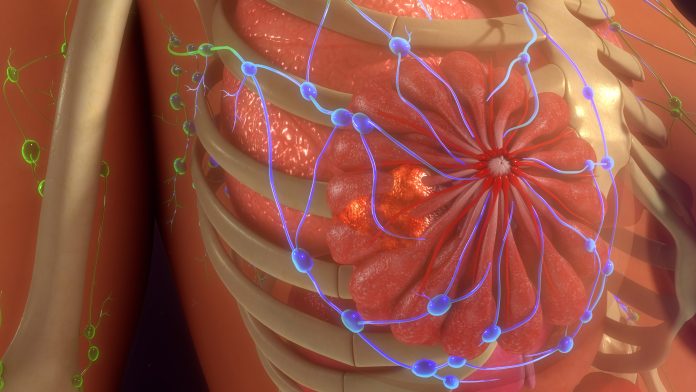
A pair of researchers from the University of Nevada have a new study that highlights the potential of both natural and engineered molecules to block cancer cell movement. This finding offers a promising strategy to combat the deadliest form of brain cancer—glioblastoma multiforme (GBM).
Their research paper appears in Oncotarget and the authors are Elham Taheri, a research student, and Maryam Raeeszadeh-Sarmazdeh, PhD, assistant professor, both of Chemical and Materials Engineering, University of Nevada.
GBM is the most common malignant brain and other CNS tumors, accounting for 47.7% of all cases. It has an incidence of 3.21 per 100,000 population. It is particularly difficult to treat because it spreads so quickly into healthy brain tissue, making complete surgical removal nearly impossible.
A major driver of this type of tumor’s invasive behavior is a group of enzymes called matrix metalloproteinases (MMPs), which break down surrounding tissue and create space for cancer cells to spread.
MMPs are known to play an important role in the tissue invasion and metastasis of cancer cells. The tissue inhibitors of MMPs (TIMPs) are endogenous inhibitors of MMPs, and regulation of MMPs by TIMPs is particularly important for the maintenance of the ECM.
Among them, MMP-9 plays a significant role in GBM progression and resistance to current treatments.
Taheri and Raeeszadeh-Sarmazdeh investigated TIMPS and specially engineered versions of these molecules designed for better effectiveness. The study used cell line models of GBM to test both TIMP-1 and TIMP-3 and their engineered counterparts (mTC1 and mTC3), specific blockers of MMP-9.
“Our study focused on minimal TIMP variants, due to their small molecular size and potential in higher cellular uptake and delivery, to assess their potential in cell-based assays,” the authors said.
They found that the engineered TIMPs were just as effective as, or even better than, the natural ones at reducing cancer cell migration and invasion. These findings are particularly promising because previous attempts to block MMPs with small-molecule drugs faced challenges such as poor selectivity and unwanted side effects. In contrast, these engineered TIMPs offer a more targeted and potentially safer approach.
One of the biggest obstacles in treating brain cancer is delivering drugs across the blood-brain barrier, a protective layer that prevents many therapeutic compounds from reaching the brain.
To address this, the researchers used cell-penetrating peptides to help the TIMP variants reach and enter cancer cells more effectively. Their results confirmed that the engineered TIMPs successfully reached tumor cells, further increasing their potential as a treatment.
Additionally, the study found that engineered TIMPs did not significantly affect healthy cells at lower doses, suggesting they could be used safely. This makes them strong candidates for further drug development.
The researchers believe these findings could lead to new treatment options for GBM, which currently has very few effective therapies. The team’s future research will focus on testing TIMP variants in animal models to evaluate their long-term effects and safety. The team also plans to investigate whether combining these engineered TIMPs with existing treatments, such as chemotherapy or immunotherapy, could improve outcomes.
As the researchers wrote, “Because of the aggressive nature of GBM and the urgent need for better therapies, this study represents an important step forward. If further research confirms these results, engineered TIMPs could become a valuable tool in the fight against brain cancer.”









![Best Weight Loss Supplements [2022-23] New Reports!](https://technologytangle.com/wp-content/uploads/2022/12/p1-1170962-1670840878.png)




